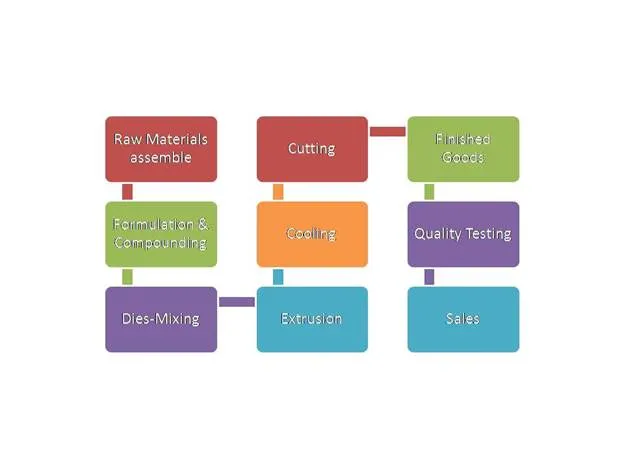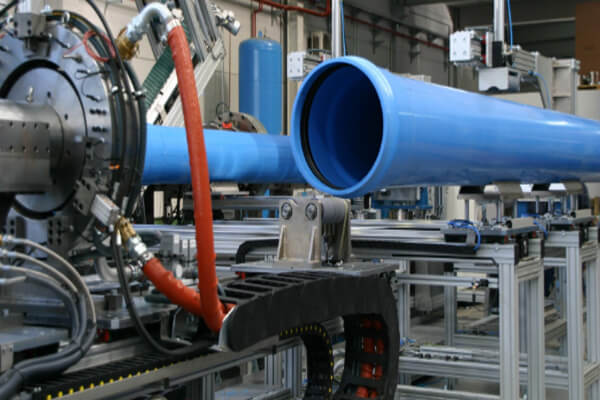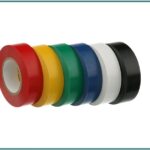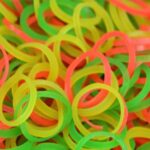PVC stands for Polyvinyl-Chloride. You can start PVC pipe manufacturing business as small and medium scale basis. PVC pipe nowadays a widely used material in electrical, irrigation and construction industry. It effectively replaces wood, paper, and metal in several applications. Use of PVC pipes as electrical conduits is well accepted in the household and industrial activities. Different diameters PVC pipes have gained wider acceptance for water supply. They are ideal for a number of reasons. Such as light-weight, low cost, easy installation, non-corrosiveness, high tensile strength to withstand high fluid pressure etc. They also offer resistance to most of the chemicals and have excellent electrical and heat insulation properties.
PVC PIPE MANUFACTURING – MARKET POTENTIAL
The Indian PVC pipes market is growing at a healthy rate due to tremendous government spending on infrastructure. The construction sector and the agricultural sector are expected to boost demand for PVC pipes in the future. PVC pipes are used for a variety of purposes e.g. water supply schemes, spray irrigation, deep tube well schemes and land drainage schemes. PVC slotted and corrugated pipes are ideal systems for drainages of water from the land where water logging is inevitable. In view of the priorities to rural water suppliers, irrigation facilities in the national planning, immense growth in the construction industry and rapid rural electrification, the demand for rigid PVC pipe is growing regularly. The 60% of the total demand of PVC pipe exist today is up to 110 mm outer diameter.
PVC PIPE MANUFACTURING BUSINESS REGISTRATION & LICENSE
In starting PVC pipe manufacturing, first register your business with ROC. Obtain Trade License from Municipal authority. Apply for Factory License according to your state rules. Obtain Vat registration. Apply for Udyog Aadhaar MSME online registration. Apply for a ‘No Objection Certificate’ from the state’s Pollution Control Board. Obtain BIS certification for Quality Control. Open a Current Bank Account. Preferred the nationalized bank. Protect your brand by having a Trademark Registration. You can also apply for ISO Certification.
PVC PIPE MANUFACTURING MACHINERY & EQUIPMENT
Following machinery are required:
1. High-speed Mixer, nonshell type cap.50 kg. per batch/hr. filled with complete controls and cooling arrangement.
2. 65 mm/18 V PVC rigid pipe extrusion plant consisting of twin screw extruder, vacuum sizing unit, cooling tank, haul off the unit and cutting device complete with controls and motor, etc.
3. Dies size 20, 25, 45, 63, 75, 90, 110 mm and mandrel size 2.5 kg/cm2, 4 kg/cm2, 6 kg/cm2, 10 kg/cm2.
4. Scraper, grinder, heavy duty fitted with electric Motor.
5. Overhead water tank and recycling Pump units
6. Weighing balance, heavy type industrial model with moderate accuracy.
7. Pipe storage, racks, maintenance of small hand tools, greasing, oiling equipment, etc.
8. Chemical testing laboratory equipment such as chemical balance, Oven, and equipment with testing equipment, apparatus for testing bulk density, specific gravity lead and tin estimation (in ppm), Lab. Equipment consisting of capacity testing apparatus, Impact tests, compressive strength, Hydraulic pressure (long term, short term) apparatus.
RAW MATERIALS FOR PVC PIPE MANUFACTURING
The required major raw materials are PVC resin, DOP, Stabilizers, Processing acids, Lubricants, Colours, Fillers. Major utilities required are electricity and water.
PVC PIPE MANUFACTURING PROCESS FLOW CHART
In the manufacturing process, various steps are taken as follows:
#1. Extrusion
PVC uncompounded resin, unlike some other thermoplastics, is not suitable for direct processing. To confer the required processing and end instability, it is necessary to mix additives with the PVC resin. Following are some of the additives which are generally used for the manufacture of rigid PVC pipes.Plasticizers: The common plasticizer in use is DOP, DIOP, DBP, DOA, DEP,
Plasticizers: The common plasticizer in use are DOP, DIOP, DBP, DOA, DEP, Reoplast, Paraplex etc.Stabilizers: The common stabilizers are lead, barium, cadmium,
Stabilizers: The common stabilizers are lead, barium, cadmium, tin, stearate etc. Lubricants: Widely used lubricants are Buty-Stearate, Glycerol Moni-Stearate, Epoxidised Monoester of oleic acid, stearic acid etc. Fillers: Fillers are also used for producing
Fillers: Fillers are also used for producing the special quality product (e.g. calcined clay is used to improve the electrical properties of cable compounds).
Before the extrusion operation, PVC resin is to be compounded with plasticizers, stabilizers, lubricants and fillers to improve processability and improve the ensure stability. PVC resin is compounded with other ingredients in a high-speed mixer. The compound resin is fed to the double screw extruder where the inserts and die body for the required pipe diameter are fitted. The PVC compounds are then passed through a heated chamber and they get melted under the compression of the screw and temperature of the barrel. The marking on the pipe is done at the time of extrusion.
#2. Sizing
The pipes coming out from the extruder is cooled in the sizing operation. There are basically two types of sizing used for manufacturing of pipes. They are (i) Pressure sizing & (ii) Vacuum sizing.
#3. Traction
The next operation needed after sizing is traction. The tube traction unit is required for continuous haulage of the pipes being extruded by the extruder. Cutting: The last operation needed is cutting. There are basically two cutting techniques for rigid PVC pipes viz. manual and automatic. The pipes are then tested for ISI marks and are ready for dispatching.
#4. Cutting
The last operation needed is cutting. There are basically two cutting techniques for rigid PVC pipes viz. manual and automatic. The pipes are then tested for ISI marks.
 The last step of PVC pipe manufacturing is the transport.
The last step of PVC pipe manufacturing is the transport.


